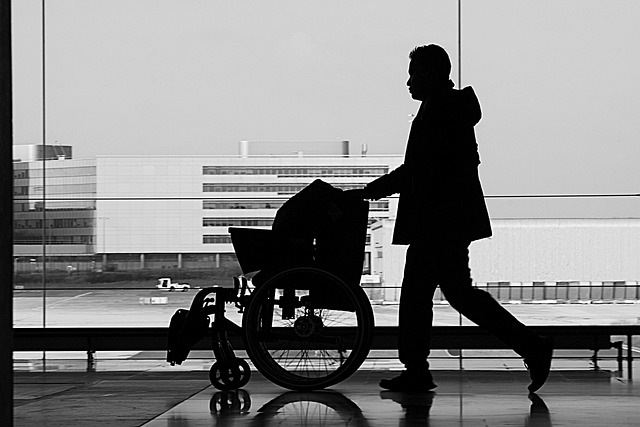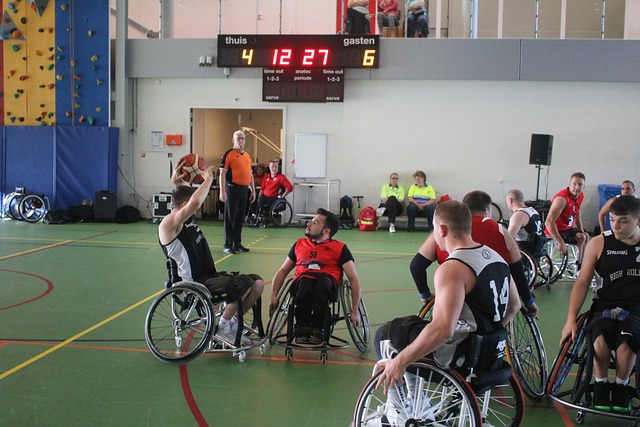Eugene, Oregon, champions accessible transportation as a key component of an inclusive community. With a diverse population including seniors and individuals with disabilities, the city prioritizes disabled transport and wheelchair-accessible services. Comprehensive solutions like paratransit services connect communities, facilitate access to essential services, and enhance quality of life. Eugene's commitment not only meets legal requirements but also serves as a model for other municipalities, demonstrating the vital role of accessible transport in building a vibrant and welcoming urban landscape. Through community involvement and grassroots efforts, Eugene Oregon strives to provide seamless, inclusive transport options for all.
Eugene, Oregon, boasts an ambitious commitment to accessible transportation, prioritizing inclusivity for all residents, including those with disabilities and seniors. This dedication is evident through various initiatives and facilities aimed at enhancing mobility options. From wheelchair accessible public transit and paratransit services to ongoing efforts to improve infrastructure, the city strives for a future where disabled transport and senior transport are seamless and independent. Discover how Eugene’s approach sets a benchmark for inclusive transport, ensuring everyone can navigate the city with ease.
- Understanding the Need for Accessible Transport in Eugene, Oregon
- Current Initiatives and Facilities for Disabled and Senior Transportation
- Wheelchair Accessible Options in the City: Public Transit and Paratransit Services
- Challenges and Future Enhancements for Inclusive Transport
- Community Involvement and Resources for Planning a More Accessible Future
Understanding the Need for Accessible Transport in Eugene, Oregon

In Eugene, Oregon, understanding the need for accessible transportation goes beyond mere compliance; it’s a matter of fostering an inclusive community where everyone, regardless of ability, can navigate the city with ease. With a growing population that includes seniors and individuals with disabilities, ensuring accessible transport options is not just a social responsibility but also a vital component of urban planning. The demand for disabled transport and wheelchair-accessible services in Eugene highlights the importance of creating an environment where physical barriers are minimized, promoting independence and quality of life for all residents.
The city’s commitment to inclusive transport doesn’t stop at public buses and trains; it extends to paratransit services that cater specifically to individuals with limited mobility. These services play a crucial role in connecting communities, facilitating access to employment, healthcare, and social activities, thereby enriching the lives of those who rely on them. By prioritizing accessible transportation Eugene Oregon, the city not only meets legal obligations but also sets an example for other municipalities, demonstrating that inclusive transport is a key driver in building a vibrant and welcoming urban landscape.
Current Initiatives and Facilities for Disabled and Senior Transportation

Eugene, Oregon, has been actively working on enhancing its accessibility for disabled and senior citizens in terms of transportation. The city offers a range of initiatives and facilities to ensure that everyone can get around safely and comfortably. One notable aspect is the focus on wheelchair accessible options, with many public transit vehicles and facilities designed or modified to cater to these needs. Paratransit services play a crucial role here, providing door-to-door transportation for those who cannot use regular bus services due to disabilities.
Additionally, Eugene has implemented inclusive transport solutions that go beyond physical accessibility. Services are designed to accommodate different mobility requirements, ensuring seniors and disabled residents can access various destinations with ease. These efforts reflect the city’s commitment to creating an inclusive environment where everyone is able to participate fully in community life, regardless of their abilities.
Wheelchair Accessible Options in the City: Public Transit and Paratransit Services

Eugene, Oregon, is renowned for its commitment to creating an inclusive and accessible city, which extends to its transportation infrastructure. One notable aspect is the availability of various wheelchair-accessible options within the urban area. Public transit in Eugene is designed with accessibility in mind, featuring low-floor buses that accommodate wheelchairs and other mobility aids. These buses are equipped with ramps and lift mechanisms, ensuring easy boarding for individuals using wheelchairs.
Additionally, the city offers paratransit services specifically tailored to meet the needs of people with disabilities, seniors, and those who cannot use regular public transit. These services provide door-to-door transportation, making it convenient for individuals with limited mobility to get around. Paratransit operators are trained to assist passengers using wheelchairs and other accessibility devices, ensuring a safe and comfortable journey. Eugene’s inclusive transport solutions demonstrate its dedication to enabling all residents and visitors to navigate the city effortlessly, fostering a sense of community and accessibility.
Challenges and Future Enhancements for Inclusive Transport

Despite significant strides in accessibility within the city’s infrastructure, Eugene, Oregon still faces challenges in creating a truly inclusive transport network for all its residents. The primary obstacles include aging public transportation systems that may not accommodate the diverse needs of people with disabilities or mobility issues, such as those using wheelchairs or other assistive devices. Additionally, the current paratransit services, while vital for many, often face delays and limited coverage areas.
Looking ahead, there is a growing emphasis on enhancing inclusive transport in Eugene. This involves modernizing public transit to ensure wheelchair accessibility, implementing real-time tracking systems for paratransit services, and expanding routes to better serve senior citizens and individuals with disabilities. These future enhancements aim to create a seamless, efficient, and welcoming transportation network that caters to the diverse mobility requirements of all members of the community.
Community Involvement and Resources for Planning a More Accessible Future

In the pursuit of a more accessible future for transportation in Eugene, Oregon, community involvement plays a pivotal role. Local initiatives and grassroots efforts have been instrumental in advocating for better disabled transport, senior transport, and wheelchair accessible options within the city. Residents actively participate in public meetings, offering insights and experiences to shape the development of inclusive transport solutions. This collaborative approach ensures that the unique needs of the diverse population are considered, from paratransit services to comprehensive urban planning, fostering a sense of ownership and enhancing the overall transportation experience for all.
Numerous resources are available to support these endeavors. Community organizations, such as local disability advocacy groups, provide invaluable expertise and networking opportunities. They offer guidance on navigating the complexities of accessible transportation Eugene Oregon, advocating for improvements, and ensuring that paratransit services meet the requirements of those who rely on them. These collective efforts contribute to a growing network dedicated to promoting and enhancing accessibility in all facets of urban mobility, making Eugene a model city for inclusive transport in the region.
